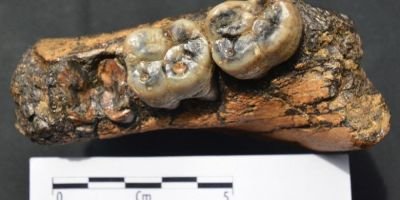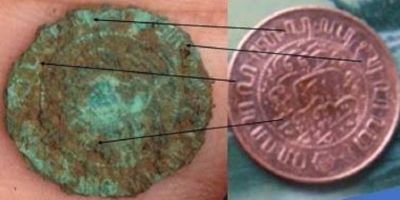
In 2014, Indonesian archeology triumphed and became the world's spotlight. A number of interesting and important findings expressed by both domestic and foreign archaeologists. Some are very surprising, some are very controversial. Anything?
Cave Paintings

Painting cave in karst area in Maros, Sulawesi is the most astounding findings. Painting, or more precisely called the images of rocks, it's 40,000-year-old, the oldest in the world. The age of picture rocks was revealed thanks to the cooperation of archaeologists from the archaeological Center of National Archaeological Hall, Makassar, Heritage Preservation Agency (BPCB) Makassar, and the University of Wollongong in Australia.
Picture of rocks are found hand-shaped. In addition to the 40,000-year-old, found also in other rock pictures of the younger ones, including in the form of pictures-old babirusa 35,400 naturalist of the year.
Nicks ancient Shell

Other findings that are not less interesting is the nicks on the ancient shells. Nicks it is actually very simple, just a zig-zag line. But, because of the age and original poster image was so interesting.
It was revealed through research Josephine CA Jordens, a researcher at the Faculty of Archaeology at Leiden University, the Netherlands, the shell is the nicks of the oldest in the world, dating from the period of 500,000 years ago.
Uniquely, nicks was not made by modern humans (Homo sapiens), but Solo by early humans (Homo erectus). Nicks it shows that creativity has been developing since before the modern man himself there.
Padang Mountain Coin

Padang Mountain coins being the most kontriversial findings. Found through excavation by the National Research Team of mountain Meadow in September 2014 and then claimed, coins from the 500-5200 BC.
However, analysis by archaeologists from the archaeological Hall, Bandung, Lutfi Yondri, the coin turned out similar to the Netherlands of coin the year 1945. Age estimates are considered research team does not match the depth place the coins found, 11 meters.
Kingkong as High as 3 Meters

On the website of Semedo in Central Java in June 2014, and then a resident found the bones. Findings were then followed up by a team from Yogyakarta Archaeological Hall. It is revealed, it's a bone kingkong. Findings were astounding. Because, the analysis revealed that the size of the bones, the kingkong can actually measuring 3 meters.
Kingkong species Gigantopithecus blacki was found. The head of the Yogyakarta Archaeological Hall, Siswanto, reveals, the findings indicate that the giant apes once lived in Java, in contrast to the scientists that the giant apes live only in the northern regions.
Note :
Surprisingly, three-metre Kingkong Lived in Java
Archaeological findings are Astonishing and controversial of Indonesia Year 2014
Padang Mountain coins being the most kontriversial findings.
Painting cave in karst area in Maros, Sulawesi is the most astounding findings
REFERENCE
Source :

You received a 10.0% upvote since you are not yet a member of geopolis and wrote in the category of "archeology".
To read more about us and what we do, click here.
https://steemit.com/geopolis/@geopolis/geopolis-the-community-for-global-sciences-update-4